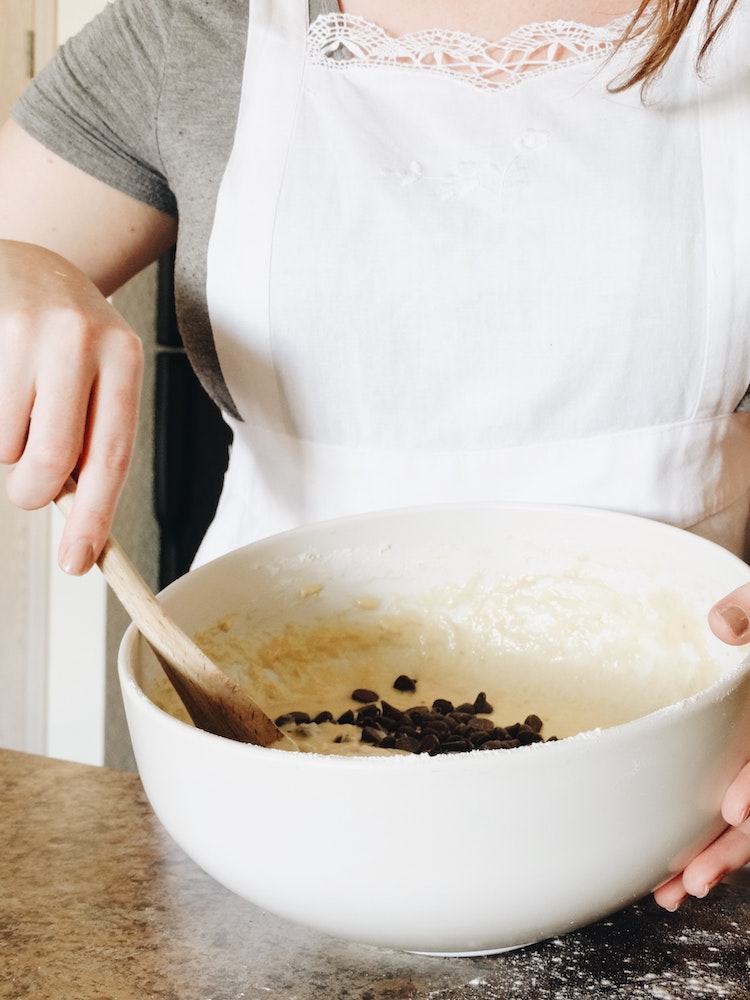
You’re in the middle of baking your favorite cookie recipe when you realize… you’ve run out of baking soda. Oh no! What are you to do?
Can you use that baking powder in your cabinet instead?
Yes, you can!
Not only do baking soda and baking powder have similar names, they also have similar functions. They both leaven (or rise) your baked goods.
However, there are a few differences between the two products, so you need to understand how they’re different before you substitute (doing a 1-for-1 substitute won’t work here, sorry!).
What is the difference between baking soda and baking powder?
Baking soda leavens baked goods when it’s combined with an acid (like lemon juice, vinegar, or cream of tartar). Just like your grade school volcano, this combination of ingredients reactions by bubbling up, creating carbon dioxide air bubbles and giving your breads and cookies a great texture.
You don’t need to add an acid to get baking powder to work – it already contains one! Baking powder is a combination of baking soda and a weak acid, plus a binding starch to stabilize the product to stop it from reacting before you use it. That means that this shelf-stable product will only react when you introduce liquid and heat to it.
Things to keep in mind before substituting

While they’re related products with the same function, baking soda and powder do have their differences. So here’s some things you will need to keep in mind before substituting one for the other.
- Baking powder is basically just baking soda plus an acid. That means that if your original recipe uses baking powder, you will need to also add an acid if you’re substituting with baking soda. It won’t work on its own.
- Baking powder is made up of other ingredients besides baking soda. So by volume, it contains less of the raising agent (baking soda) you need to rise your baked goods. That means that you’ll need more baking powder to accomplish the same level of rise.
- You may find that your recipe has a slightly different taste if you use a different leavening agent. You probably won’t notice it if you’re making a strong chocolatey cake, but if you’re making a delicately flavored vanilla cookie, you might be able to taste the difference. However, if you’re strapped for time or have just run out of powder or soda, these conversions will do in a pinch. They should give you a similar texture and rise to the original recipe.
So now that you have all of these things in mind, how do you convert these two ingredients? Is there an easy way? Luckily, yes! There’s some easy formulas you can use to convert!
Converting Baking Soda to Baking Powder
If your recipe uses baking soda but you only have baking powder, to substitute, a general rule is:
1 teaspoon of baking powder = 1/4 teaspoon of baking soda
Converting Baking Powder to Baking Soda
If your recipe uses baking powder, it might not have an acid in it to activate your substituted baking soda. So if you’ve run out of baking powder, you can use soda. Just remember that baking soda is a lot more potent, since it’s undiluted!
To substitute, you can use baking soda plus cream of tartar:
1/2 teaspoon cream of tartar + 1/4 teaspoon baking soda = 1 teaspoon baking powder
If you don’t have cream of tartar, you can also use another acid in place of it. Lemon juice and white vinegar are the most common kitchen acids. However, please remember that these two acids have a much stronger taste than cream of tartar! Their taste will come through in more delicate-flavored baked goods.
If you do choose to use lemon juice or vinegar as your acid, here’s a simple conversion:
1 teaspoon of lemon juice (or white vinegar) + 1/4 teaspoon of baking soda = 1 teaspoon of baking powder
Conclusion
Substituting baking soda and baking powder is simple, as long as you understand the basic science behind it. I hope this post cleared up some of the mysteries between these two similar ingredients.
Happy baking (and converting)!

Leave a Reply
You must be logged in to post a comment.